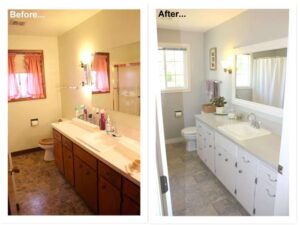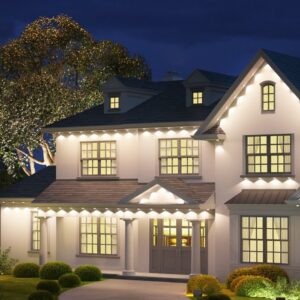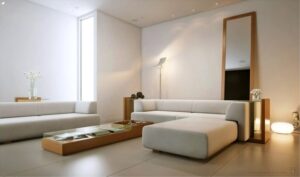
Small space makeover is not just about aesthetics; it’s a journey of transforming limited areas into stylish and functional havens. With a blend of creativity and practicality, small spaces can be reimagined to meet your everyday needs while reflecting your personal style. Whether you’re living in a tiny apartment or a cozy house, the right strategies can make your space feel open and inviting.
This guide will explore innovative ideas for maximizing functionality in small spaces. From transforming rooms into multi-purpose areas to making smart furniture choices and incorporating greenery, you will find everything you need to elevate your small space.
Small Space Makeover Ideas
Transforming small spaces into functional and aesthetically pleasing areas requires innovative thinking and strategic design. Whether you’re living in a compact apartment or a cozy studio, maximizing every inch of space is essential. This guide offers unique makeover concepts that will help you create a multi-purpose environment, along with design tips to enhance color and lighting.
Innovative Small Space Makeover Concepts
Utilizing innovative concepts allows you to maximize functionality in small spaces. Here are a few ideas that can make a significant difference:
- Foldable Furniture: Choose furniture that can be easily folded or collapsed when not in use. For example, a wall-mounted desk or a drop-leaf table can provide workspace when needed but can be tucked away to free up area.
- Vertical Storage Solutions: Implement shelves that reach the ceiling to draw the eye upwards and create more storage without taking up floor space. Utilize bookcases or floating shelves to keep items organized and decorative.
- Multi-Functional Pieces: Invest in furniture that serves multiple purposes, such as a sofa bed or an ottoman with storage inside. This not only adds functionality but also helps in decluttering.
Steps to Create a Multi-Purpose Room
Designing a multi-purpose room in a small apartment involves careful planning and execution. Follow these detailed steps to achieve a seamless transformation:
- Define the Functions: Determine the primary functions of the space. For example, will it serve as a home office, guest room, or entertainment area?
- Select Versatile Furniture: Choose furniture that adapts to your needs. A sofa that converts into a bed or a desk that can be adjusted for standing or sitting can significantly enhance functionality.
- Create Zones: Use area rugs or room dividers to define different zones within the space. This can enhance privacy and organize the room effectively.
- Optimize Lighting: Incorporate layered lighting with ceiling fixtures, task lights, and floor lamps to brighten different areas and create an inviting atmosphere.
- Keep it Minimal: Limit decor and furniture to essentials to avoid overcrowding. This allows for a more open and airy feel.
Design Tips for Color and Lighting
The right color scheme and lighting can dramatically enhance small areas. Consider these design tips:
- Light Colors: Use light, neutral colors to make small spaces appear larger and more open. Shades of white, beige, or soft pastels can reflect light and create a more spacious feel.
- Accent Walls: Consider incorporating an accent wall with a bolder color or pattern. This adds character without overwhelming the space.
- Layered Lighting: Implement a combination of ambient, task, and accent lighting to create depth. Use dimmers to adjust the mood according to the time of day.
- Mirrors: Strategically placing mirrors can visually expand the space by reflecting light and creating the illusion of depth. A large mirror on one wall can act as a focal point while enhancing brightness.
“Innovative design is about maximizing functionality while maintaining visual appeal.”
Furniture Solutions for Small Spaces

Creating an inviting and functional small space often requires a keen eye for furniture selection and arrangement. Space-saving furniture not only enhances the aesthetic appeal of a room but also maximizes its usability. By focusing on style and functionality, you can transform even the coziest of areas into a comfortable haven.When it comes to small spaces, the right furniture choices can make all the difference.
Selecting pieces that serve multiple purposes, are compact, and fit seamlessly into the existing décor can help to create an illusion of more space while providing practical solutions. Here are some effective furniture solutions that can elevate your small space.
Space-Saving Furniture Options
Choosing space-saving furniture can significantly impact how you utilize your area. Here are some stylish and functional options to consider:
- Foldable Dining Tables: These tables can be expanded when needed and easily collapsed when not in use, allowing for flexibility in dining and living areas.
- Storage Ottomans: Combining comfort with practicality, storage ottomans double as seating and provide hidden storage for blankets or miscellaneous items.
- Murphy Beds: Ideal for studios or small bedrooms, a Murphy bed folds up against the wall when not in use, freeing up floor space during the day.
- Corner Sofas: Perfect for maximizing seating in small living rooms, corner sofas fit snugly into corners, making efficient use of available space.
- Wall-Mounted Desks: These can be folded down when in use and lifted up when finished, enhancing functionality in a compact manner.
Arranging Furniture for Optimal Space
Proper furniture arrangement is vital in small spaces to create a sense of flow and accessibility. A well-thought-out layout can make a room feel more open and inviting. Here are strategies to optimize your space through effective arrangement:
- Define Zones: Use furniture to create distinct areas for different activities, such as lounging, dining, or working. This helps maintain functionality while keeping the area organized.
- Floating Furniture: Instead of pushing all furniture against the walls, consider positioning some pieces away from the wall to create pathways and enhance the feeling of space.
- Use Vertical Space: Tall bookshelves or wall-mounted storage can draw the eye upward and make the room feel larger, while also providing ample storage.
- Scale Down: Ensure that the size of your furniture is proportional to the room. Oversized pieces can overwhelm a small area, while appropriately scaled furniture contributes to a balanced look.
Modular Furniture and Built-Ins
Modular furniture and built-in solutions are excellent for adapting to the unique needs of small spaces. They offer flexibility, allowing you to reconfigure your layout as needed.
- Modular Sofas: These can be rearranged to suit various occasions, making them perfect for social gatherings or cozy nights in.
- Built-In Shelving: Utilizing wall space with custom shelving can provide ample storage without taking up floor space. This is particularly beneficial in living rooms or home offices.
- Stackable Furniture: Items like stackable chairs or tables can be stored away when not in use, keeping the space looking neat and uncluttered.
- Custom Cabinets: Built-ins can be designed to fit specific dimensions, ensuring that every inch of space is utilized effectively.
“Thoughtfully chosen furniture can transform a small space into a functional and stylish oasis.”
Integrating Gardening in Small Spaces

Creating a green oasis in a compact area can enhance your living environment, improve air quality, and bring tranquility to your daily life. Integrating gardening into small spaces is not only feasible but can also be a rewarding endeavor that adds beauty and freshness to your home or balcony. With clever planning and creative solutions, you can enjoy the benefits of nature even in the tiniest of areas.
Creating a Compact Indoor Garden Using Vertical Space
Vertical gardening is an innovative approach that maximizes the limited square footage of small indoor spaces. By utilizing walls, shelves, and other vertical surfaces, you can cultivate a variety of plants without sacrificing precious floor space. Here are effective methods to consider:
- Wall-mounted Planters: Install wall-mounted planters or pockets that can hold small plants. These can be made of fabric, wood, or metal, allowing you to create a living tapestry of greenery. Herbs, succulents, and small flowers thrive in such setups.
- Hanging Gardens: Use macramé hangers or ceiling hooks to suspend pots from the ceiling, turning any corner into an eye-catching botanical display. This method also draws the eye upward, creating the illusion of a larger space.
- Shelf Gardens: Incorporate tiered shelving units where you can place pots of various sizes. This not only creates an attractive multi-level garden but also provides easy access to each plant.
Incorporating Plants Without Cluttering
In small living areas, it is essential to choose plants and arrangements that do not overwhelm the space. Thoughtful selection and arrangement of plants can create a vibrant atmosphere while maintaining a sense of openness. Consider the following strategies:
- Choose Minimalist Pots: Opt for sleek, simple pots that complement the decor rather than dominate it. Neutral colors like white, gray, or natural materials like terracotta can help integrate your plants seamlessly.
- Utilize Multi-functional Furniture: Use furniture pieces with built-in planters or shelving for plants. For example, a coffee table with a planter in the center can serve dual purposes, saving space and enhancing aesthetics.
- Limit the Variety: Select a small number of plant types in varying heights and textures to create an organized look. Grouping similar plants together can form a cohesive visual impact while avoiding clutter.
Maximizing Balcony or Patio Gardening
Even the smallest balcony or patio can become a thriving garden with the right techniques. By optimizing the available space, you can cultivate a lush outdoor retreat. Here are ideas to enhance your outdoor gardening experience:
- Rail Planters: Install planters on balcony railings to utilize vertical space while keeping the floor clear. This not only provides a growing area but also adds charm to the balcony’s perimeter.
- Stackable Pots: Consider stackable or tiered planters that allow for vertical growth. These designs conserve space while offering ample planting opportunities for herbs, flowers, and vegetables.
- Vertical Trellis: Incorporate a vertical trellis or screen for climbing plants like peas or beans. This adds height and creates a green wall effect, enhancing privacy and aesthetics.
“Gardening in small spaces is all about being creative with what you have, turning limitations into opportunities for beauty.”
Outcome Summary
In conclusion, embracing the challenge of a small space makeover allows for remarkable transformations that enhance both comfort and style. By implementing thoughtful design choices, selecting the right furniture, and integrating nature into your living area, you can create an environment that feels spacious and alive. So, let your creativity flow and start your makeover journey today!
FAQ Section
What are some essential tips for maximizing small spaces?
Utilize vertical storage, choose multifunctional furniture, and incorporate mirrors to create an illusion of space.
How can I make a small room feel bigger?
Use light colors, ensure good lighting, and keep furnishings minimal to enhance openness.
What kind of plants are best for small spaces?
Opt for low-maintenance plants like succulents or small herbs that thrive in compact areas.
Are there specific furniture pieces that work best for small areas?
Look for items like collapsible tables, ottomans with storage, and wall-mounted shelves to save space.
How can I incorporate a garden in a small apartment?
Create a vertical garden or use window boxes to utilize limited outdoor and indoor space effectively.





